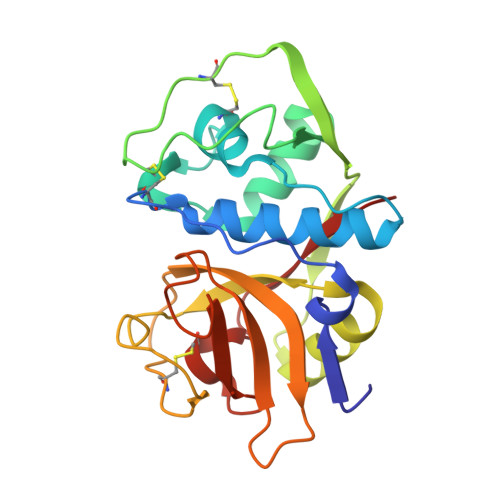Intramolecular Interactions Enhance the Potency of Gallinamide A Analogues against Trypanosoma cruzi .
Barbosa Da Silva, E., Sharma, V., Hernandez-Alvarez, L., Tang, A.H., Stoye, A., O'Donoghue, A.J., Gerwick, W.H., Payne, R.J., McKerrow, J.H., Podust, L.M.(2022) J Med Chem 65: 4255-4269
- PubMed: 35188371
- DOI: https://doi.org/10.1021/acs.jmedchem.1c02063
- Primary Citation of Related Structures:
7JUJ, 7S18, 7S19 - PubMed Abstract:
Gallinamide A, a metabolite of the marine cyanobacterium Schizothrix sp., selectively inhibits cathepsin L-like cysteine proteases. We evaluated the potency of gallinamide A and 23 synthetic analogues against intracellular Trypanosoma cruzi amastigotes and the cysteine protease, cruzain. We determined the co-crystal structures of cruzain with gallinamide A and two synthetic analogues at ∼2 Å. SAR data revealed that the N-terminal end of gallinamide A is loosely bound and weakly contributes in drug-target interactions. At the C-terminus, the intramolecular π-π stacking interactions between the aromatic substituents at P1' and P1 restrict the bioactive conformation of the inhibitors, thus minimizing the entropic loss associated with target binding. Molecular dynamics simulations showed that in the absence of an aromatic group at P1, the substituent at P1' interacts with tryptophan-184. The P1-P1' interactions had no effect on anti-cruzain activity, whereas anti- T. cruzi potency increased by ∼fivefold, likely due to an increase in solubility/permeability of the analogues.
Organizational Affiliation:
Skaggs School of Pharmacy and Pharmaceutical Sciences, Center for Discovery and Innovation in Parasitic Diseases, University of California San Diego, La Jolla, California 92093, United States.
















